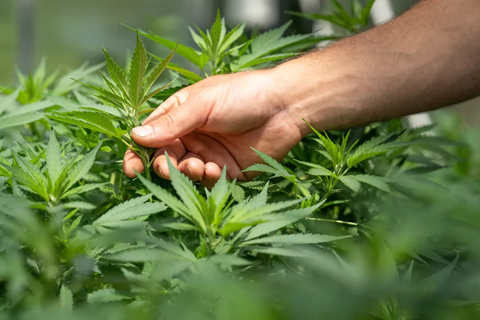How To Source the Best Biomass for Cannabis Extraction
What is Cannabis Biomass? How to Source the Best One for Cannabis Extraction
What is Cannabis Biomass?
As the cannabis industry expands with new-to-industry professionals, we find it important to start by defining the term “biomass”. It’s a common misconception that cannabis distillates are produced from the same flower that is packaged and sold to be smoked. During the cultivation process, the main flower cluster (or “bud”) is usually removed and packaged for sale. The remaining leaves, stalks, and stems are considered cannabis biomass. Though biomass usually has a lower potency of desirable compounds (like terpenes and cannabinoids) than buds, there’s still plenty remaining for a skilled extractor to extract a high-quality cannabis distillate.

Selecting high-quality cannabis biomass is a crucial first step in creating high-quality cannabis distillate.
Why is Biomass Selection So Important?
While extraction processes and technologies continue to rapidly evolve to meet the demands of the expanding global market, there will always be variables before the extraction stage that impact the quality of your distillate products. The quality of your biomass input will always play a major role in determining the quality of your distillate output. For this reason, partnering with growers and cultivators that you can trust to deliver a consistent supply of quality cannabis biomass is crucial to your success.
It’s important to select biomass with the right amounts of the desired cannabinoids (like THC and CBD) and terpenes to support the creation of your desired finished products. Testing for cannabinoids, terpenes, pesticide and heavy metal contents before committing to a partnership with a grower or cultivator is critical to ensuring you’re entering into a relationship that will get you the highest quality inputs for your process.
How to Source the Best Cannabis Biomass
Here are a few steps you can take to ensure you’re sourcing the best biomass for your cannabis distillate products:
- Perform a visual inspection – it’s fairly easy to visually identify what your biomass is comprised of; buds have the highest potency of cannabinoids, whereas leaves contain a lower potency, and stalks and stems contain very little desired compounds
- Ensure your biomass is “homogenized” – since your biomass can come from a variety of strains and sources, it’s important to ensure the distinct plant products have been properly mixed together so they can be tested as a single entity
- Test the potency of compounds in the biomass – test the biomass for its potency of cannabinoids, terpenes, pesticides, and heavy metals in relation to the concentrations tolerated by your local AHJ
- Visit your cultivators – review the grow sites, meet the people, see how they deal with pests, assess the quality of their water, etc. (learn more here)
- Perform a micro-extraction – perform a low-tech, small-scale extraction on a sample of biomass and test the quality of that distillate
Extracting Distillate from Cannabis Biomass
Once you’ve sourced the right biomass for your needs, your next step is to engage with an extraction partner that will turn that biomass into the right type of distillate. Depending on your size and type of end product you’re creating, you have a few different options for extraction solutions (learn more about your options here).
If you’re a hemp or cannabis cultivator, processor, or product formulator hoping to produce high-quality cannabis distillate, we walk to talk! Our turnkey mobile labs arrive at your facility within 4-6 months and require a $0 lab CAPEX. Please contact us to learn about becoming an extractX partner.
Follow us on social media or sign up for our newsletter for company updates and more content like this.



0 comments
Write a comment